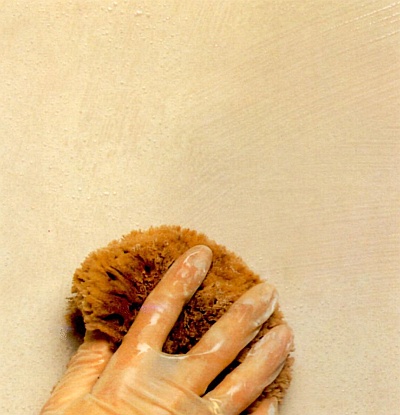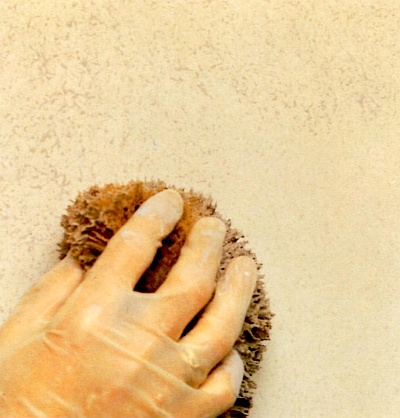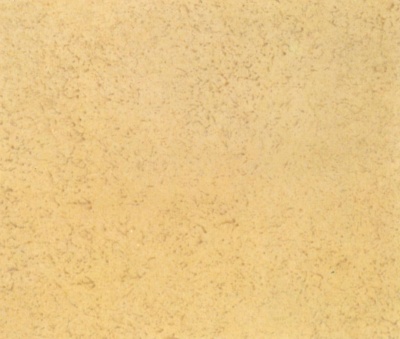The Double Sponging On and Off Paint Technique

Sponged off, then sponged on paint finish
Even though additive and subtractive sponging produce quite different effects, these 2 techniques can be successfully combined in one finish.
And while the "double sponging" method can also work in multiple colors (see the picture above), the technique that follows will help you create a more delicate alternative to the multi-toned approach for achieving depth.
For the best results, it should be executed with 2 glazes of the same color, but the glaze used for sponging off should be a thinned-down version of the glaze used for sponging on.
TIP: an optional but very effective idea is to have the 2 glazes in different sheens - for example, the first one flat, and the second one satin. That way you will add even more depth and interest to the finish, while still keeping it graceful and subtle.
Preparation
The process starts with sponging off - see this tutorial for the basic technique, a list of tools and materials, and preparation steps.Once completed, follow the effect with sponging on, as explained in the instructions below.
NOTE: remember that you can apply oil-based mediums over anything, but water based mediums can only go over water-based coats - so plan your glazing recipes and layering accordingly.
Instructions
1) One person begins by criss-crossing layers of the thinner glaze with a brush - first from top to bottom, then over it from side to side, and finally, top to bottom again.Second person follows quickly, removing the glaze with a fresh dampened sponge.

Keep going until you complete the entire wall(s). Allow the surface to dry before proceeding to step 2.
2) Sponge on the thicker glaze all over the wall(s) - only one person is needed for this step.

Cover about 30% of the surface so that the underlying sponged off finish still shows through the sponged on overlay.
3) The finished effect exhibits subtlety and depth, thanks to the blending of the two techniques.

And if you've used 2 different finishes for your glazes, the effect should look even more multi-dimensional and alive, as it shifts and changes with the light and viewing angle.
Return to Sponging Off Paint Techniques.








